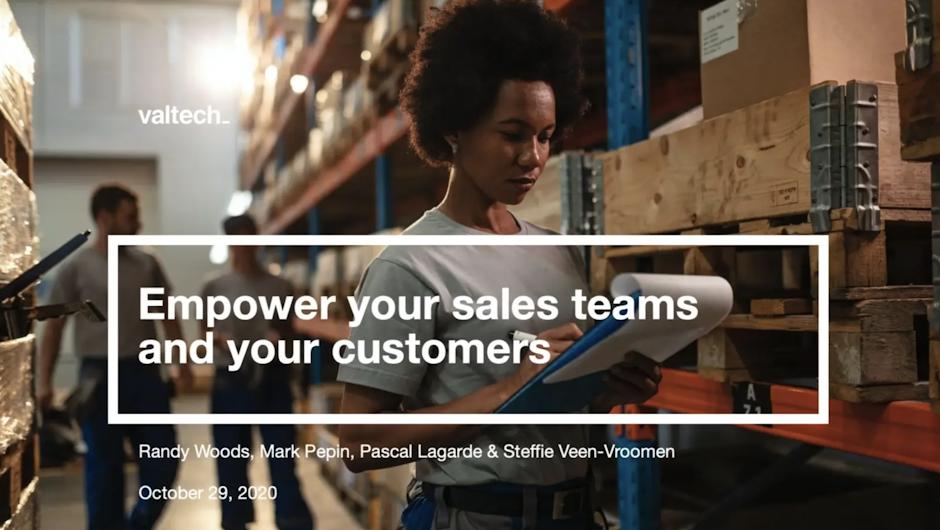02:30PM - 03:00PM GMT
03:30PM - 04:00PM CET

Last week we talked about how address rising customer expectations and emerging third party marketplaces. In this webinar we were joined by Randy Woods, Mark Pepin, Pascal Lagarde & Steffie Veen-Vroomen to discuss how to empower your sales teams and simplify the lives of your customers.
If you couldn’t make the webinar, here's the full recording, or if you’re short on time, here are our top 3 takeaways.
Distributers often employ large traditional sales teams and complex sales processes. There is an opportunity here to become more responsive as an organisation, to reduce the administrative workload and to focus more on relationship building. We know that digital sales enablement can reduce the time you need per client, increase the number of qualified leads and increased customer satisfaction and loyalty, so what are the important things to think about?
“As a wholesaler, manufacturer or distributor with your own distribution channel, you ultimately own the relationship with the end customer– so finding ways to make your sales team more effective is one way of defending yourself against the intrusion of marketplaces and also other competitors”. Randy Woods
We know that no two companies or situations are the same but many B2B companies share common frustrations. They want to reduce the friction experienced by sales reps and customers when using multiple systems, and they want to make it easier for their customers to do business with them. If you can offer your end-customers a flawless experience and value-added services, you can increase loyalty and secure long-term relationships. But how do you do that?
“It’s about connecting and combining various underlying systems e.g. your CRM solution, commerce solution or your ERP data and bringing it all together in a single interface that breaks down siloes and enables your customers and your salesforce to achieve more.” Pascal Lagarde
Here are the things that you need to look out for:
Over the last decade, consumers have become used to the concept of 24/7 self-service. Now they expect the same from suppliers. So how can you enable the same level of service in a B2B context, when dealing with multiple buyers from 1 client?
“There’s a convenience factor but there are also real cost savings for the end customer when the whole journey is made more efficient. The customer view is ‘don’t make me think, don’t make me work – you already know a lot about me, leverage that and make it work for me’, that’s where the ability to remove the friction and streamline the experience adds the most value.” Mark Pepin.
Some things to think about:
- Meeting the challenges of B2B marketplaces
- Fit for the future with agile technologies and organizations